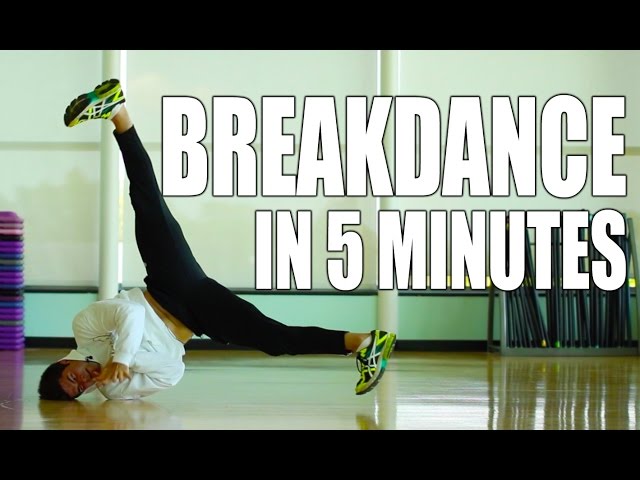Breakdancing, or b-boying as it’s known in the dance world, is not just a dance—it’s a dynamic, athletic form of artistic expression. Among the most iconic moves in breakdancing is the Windmill. It captures the essence of b-boying with its continuous, fluid motion, making it a staple in the repertoire of any aspiring breakdancer. Today, I’m excited to share a quick guide that will help you learn this impressive move in just five minutes!
Understanding the Windmill
The Windmill is a power move that involves spinning your legs in wide circles while rotating over your shoulders and upper back, keeping your torso off the ground. It’s visually spectacular and is a great way to showcase your breaking skills.
Minute 1: Mastering the Back Spin
Before you attempt the Windmill, it’s crucial to get comfortable with the back spin. This foundational skill involves creating momentum that will carry through to your Windmill.
Steps to Practice:
- Sit on the floor with your legs extended.
- Choose your direction (counterclockwise or clockwise). For counterclockwise, use your right leg to initiate.
- Swing your right leg energetically to the side to start the spin. Follow with your left leg, tucking it in to maintain the momentum.
- Transition from sitting to lying on your back, using your arms to guide and maintain your spin.
Pro Tip: Focus on smooth transitions from your buttocks to your back. Use your hands to push off slightly, which helps increase your spin speed.
Minute 2: Developing a Rounded Back
A well-rounded back allows for smoother rolls, which are essential for executing a clean Windmill.
Exercise:
- Lie on your back.
- Practice rolling from one shoulder to the opposite hip.
- Keep your chin tucked to your chest to round the back more effectively.
- Repeat this roll, focusing on smoothness and consistency.
Why It Matters: A rounded back helps you avoid flat spots during the roll, which can disrupt the flow and speed of your Windmill.
Minute 3: Baby Turtle Freeze Foundation
The Baby Turtle Freeze provides the positional foundation from which many Windmill variations are launched.
How to Do It:
- Start in a squatting position.
- Place one hand on the floor (left hand for counterclockwise).
- Rotate the palm inward and position it close to your stomach.
- Lean into your arm, lift your legs off the ground, and balance.
- Practice entering and exiting this freeze to build muscle memory.
Focus Point: Strengthen your core as it helps in maintaining balance and control during the freeze.
Minute 4: Integrating the Drop and Roll
Transitioning seamlessly into the Windmill involves a controlled drop from the Baby Turtle Freeze into a roll.
Steps:
- From the Baby Turtle Freeze, initiate a hip twist.
- Collapse your stabilizing arm gently to lower yourself onto your shoulder.
- Use your free arm to help push off from the ground as you roll across your upper back.
Key Technique: Ensure you roll over your shoulders, not your neck, to prevent injuries and maintain the fluidity of the move.
Minute 5: Putting It All Together
Now, combine all the elements into one fluid Windmill motion.
Complete the Move:
- Start with the back spin, using it to generate the initial momentum.
- As you gain speed, transition into the Baby Turtle Freeze.
- Use the momentum from your legs and the push from your arms to continue the motion.
- Seamlessly move from the freeze back into the spin, and repeat.
Final Tip: Think of the Windmill as a cycle where each move flows into the next. The smoother the transitions, the more impressive and effective your Windmill will be.
Practice Makes Perfect
While this guide is designed to help you learn the basics of the Windmill in five minutes, mastery of the move will take practice and dedication. Don’t be discouraged if it takes multiple sessions to get it right. The key is consistency and gradual improvement.
Wrapping Up
The Windmill is more than just a breakdance move—it’s a demonstration of physical artistry, balance, and strength. By breaking it down into manageable parts, you can start to incorporate this dynamic move into your dance routines. Remember, every great b-boy or b-girl started somewhere, and with practice, you’ll be spinning with the best of them. Good luck, and keep dancing!


Leave a reply